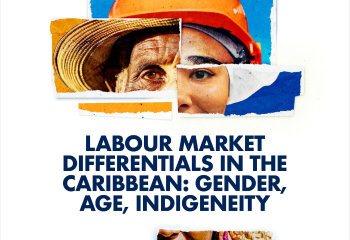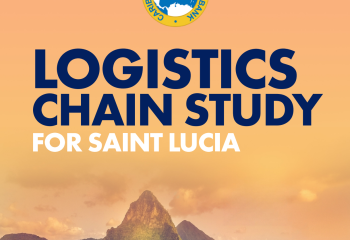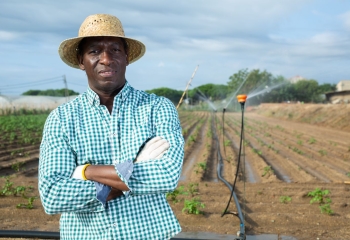Summary Environment and Social Appraisal of Seventh Water Project - St. Lucia
The Seventh Water Project for St Lucia is focused on the rehabilitation of the John Compton Dam (JCD). The main project components include, dredging and disposal of sediment, minor repairs to the dam wall, installation of dam monitoring equipment as well as the restoration of 158 hectares of land in the watershed. Technical assistance has been included to enhance the operational efficiency of the executing agency St. Lucia Water and Sewerage Company Inc. (WASCO).
The Roseau Watershed and JCD reservoir provide water security for approximately 93,000 residents in the northern districts of St. Lucia. As a consequence of extreme rainfall and landslides triggered within the Roseau catchment resulting from the passage of Hurricane Tomas in 2010 and the December 2013 Trough, siltation of the reservoir has accelerated, significantly reducing critical storage capacity. The project is expected to provide a more reliable supply of potable water to residents and businesses in north of St. Lucia.
In compliance with CDB' Environment and Social Review Procedures, the project is categorised “B' because of the limited number of specific adverse social and environmental impacts which may result from the proposed activities and which accordingly can be avoided or mitigated by adhering to generally recognised performance standards, guidelines or design criteria. An Environmental and Social Impact Assessment (ESIA) including a draft Environmental and Social Management Plan (ESMP) has been prepared to address and mitigate the environmental and social impacts of the proposed project activities. ESIA and ESMP were consulted upon and disclosed in country. A Climate Vulnerability Assessment was also carried out as part of project design process.
JCD is located on the Roseau River in the upper catchment of the Roseau watershed. The area of the watershed is within the forest reserve protected under the Forest, Soil and Water Conservation Act (revised 2008). The forest reserve is a critical natural habitat particularly because of the presence of the International Union for Conservation of Nature (IUCN) red listed species and other threatened endemic species protected by the Wildlife Protection Act 2001. Available information on aquatic resources in the Roseau River and reservoir suggests that there are no rare or sensitive species within these water bodies. There are no settlements or agricultural activity in the immediate area designated for the Dam and its associated facilities.
The primary footprint for project activities is associated with (a) installation of pipeline to convey sediment from the Dam during dredging activities to Sediment Deposit Area (SDA); and (b) the establishment of SDA approximately 1 km from the Dam. Both SDA and pipeline are located outside the boundaries of the forest reserve. The SDA is in the Construction lay-down area, which was originally used during Construction of the Dam. The pipeline footprint is very small and installation will follow the existing road right-of-way. The proposed 7.5 ha clearing of vegetation associated with SDA is in an area that is not considered to be a critical habitat and is common within the immediate area and in the watershed. However, the IUCN endangered bird species (St Lucia Black Finch) found in all the forest types in St Lucia, but which prefer secondary forest growth, are documented in the Roseau Watershed. It is anticipated that the area associated with SDA provides a habitat for this species.
St. Lucia is already experiencing some of the effects of Climate Variability and Change through damage from severe weather systems and other extreme events, as well as more subtle changes in temperatures and rainfall patterns. The primary climate variables of interest for the project, based on the key vulnerable infrastructure are (a) frequency of extreme weather events and large storms; and (b) annual and seasonal rainfall patterns and, in particular, the likely increase in the frequency and magnitude of dry season drought events that may impact water supply and annual operations of SDA.
The mitigation of identified potential natural hazard impacts particularly slope and shoreline erosion from landslide events will be addressed through design and Construction management considerations, catchment protection, and routine monitoring. Watershed restoration works in the Roseau catchment, have been included in the project design to contribute to the sustainability of the project outcomes.
Climate change adaptation measures have been incorporated into the project design process to reduce the likelihood of significant damage to the project infrastructure and civil works from identified climate variability and climate change impacts. These measures include the following:
A continuous dredging programme provides WASCO with a mechanism to remove excess sediment in the aftermath of an extreme precipitation events;
SDA dyke designed for 24-hour duration 100-year return period event;
Upgraded access roads to JCD and SDA; and
An Extreme Weather Management Plan (EWMP).
EWMP defines emergency response measures at JCD during extreme weather. WASCO has management plans and protocols for maintenance of critical water supply infrastructure during the hurricane season and emergency events. This EWMP will strengthen the management and operation of JCD and will improve WASCO' ability to facilitate a more coordinated response when specific extreme weather conditions occur. The Plan documents the rules for triggering water rationing after the lower intake port is re-activated, the methods of water rationing, and how emergency water sources will be used. It also details emergency information and communication requirements. EWMP will be integrated into WASCO' operational procedures.
ESIA indicates that the main potential significant negative residual environmental impacts associated with the project will be due to (a) land clearing activities associated with SDA, with a corresponding potential impact on water quality and wildlife, respectively; and (b) increased turbidity of the reservoir as well as sedimentation of downstream water course(s) from dredging and salvage of woody debris. The reservoir sediment was characterised in terms of grain sizes, engineering properties and chemical components. The geotechnical investigations and chemical analysis of the reservoir sediment did not detect any evidence of hazardous or toxic materials that would pose a hazard to human health or the environment. It is estimated that about 50,000 m3 per year of sand may be available for re-use after the initial 2 years of operation and deposition in SDA. WASCO has indicated its intention to prepare a management plan for SDA to ensure that capacity is maintained. Other project impacts include dust and noise nuisances, as well as vibration from excavation equipment and vehicle operation during Construction causing disturbances to wildlife; improper management of generated solid waste and hazardous waste including oils; and risks to workers health and safety.
The acquisition of approximately 34 ha of land will be required to facilitate project implementation specifically the Construction of SDA. No resettlement is required under the project and the land is not used for agricultural purposes. Acquisition will impact 11 land owners. There is a legally established procedure governing the land acquisition process in St. Lucia which requires, inter alia, that landowner(s) be compensated at market value.
The draft ESMP contains recommendations for mitigation monitoring and institutional procedures and measures that will be undertaken during project implementation to address the impacts such as habitat loss and disturbance; soil and material handling; waste disposal; water quality impacts; worker and community health and safety concerns; traffic disruption; and noise and dust during Construction. The appropriate provisions of the draft ESMP will be included in the technical specifications of the bid documents and itemised for contractor pricing in the Bills of Quantities of the bidding documents for the works contracts.
The contractor will be required to prepare an Environmental Protection Plan (EPP) detailing how the proposed works will be implemented and the specific procedures to be implemented to minimise potential adverse environmental and social impacts. In particular, a Natural Habitat Management and Biodiversity Conservation Plan; a Water Quality Management Plan; and a Waste Handling Plan for all Construction work must be prepared. The Engineering Consultants will monitor the contractors' environmental performance for compliance with the mitigation measures stipulated in the contract documents and provide routine reports to CDB. WASCO will also engage for the duration of the project, an Environmental Monitoring Officer to ensure that environmental requirements are adhered to during the Construction phase of the project.


